December 4 - 10, 2011: Issue 35
Woodley’s Cottage
Broken Bay Customs Station
Station Beach, Barrenjoey
"When worn out with city cares
and weary with its strife,
then hie thee unto Broken Bay
to renew thy lease of life"
F. S Stacy, Barranjoey Visitors Book
17 March 1900
Palm Beach is one of those places that has the rest of Sydney visiting it on weekends and summer holidays bring a throng of visitors from a few suburbs away or even from overseas. The estuary side of the tombola and the ocean beach attract those who sip champagne and those who prefer cider. Mansions are dwelt in, campers tents and caravans filled the greens where the Governor Phillip Park now is up from the 1920’s until 1970. There were boarding houses and cottages for summer rentals. One of these was Woodley’s ‘bungalow’ in the old stone cottage Custom’s House on Station Beach, just under the lighthouse.
From ‘A Life Enjoyed’ by James Russel Shorter;
There was a holiday at Barrenjoey; spent in an old stone cottage called Woodleys Cottage at the foot of a steep track (Smuggler’s Track) leading up to Barrenjoey Lighthouse. - To get there we had to row from Gow’s Wharf at Palm Beach, Pittwater. In those days Palm Beach and Cronulla were regarded as far enough to go for a holiday; but on one occasion we let our hair down and rented a cottage at Wallarah Point, Tuggerah Lakes, reached by launch down the creek from Wyong. I can still taste the succulent prawns we used to catch there.
Incidentally, the stone cottage under Barrenjoey was one of three customs cottages built in 1862 together with a substantial stone jetty. The customs station had been established there prior to this, in fact in 1843, as a result of the increased smuggling in Broken Bay. As early as May 1846 the Commissioner of Customs in London reported that the Custom Station at Broken Bay had been "successful in checking smuggling."
Prior to the first World War transport to the Peninsular and Palm Beach in particular was, to say the least, difficult. Proceeding from Circular Quay one took a ferry to Manly, then a horse-drawn streetcar to Narrabeen where a ferry crossing was made of the lake. A sulky continued the journey to Church Point and finally one took another row-boat ferry to Palm Beach.
At the time we were there, the Summer of 1919/20, transport had improved to the extent that we were able to travel by launch from Newport to Palm Beach where a small wharf had been built at Gow's boat-shed, immediately south of Observation Point. From there we proceeded by row-boat to the old Customs Jetty.
At that time Palm Beach Telephone Exchange had only 14 subscribers, and the Barrenjoey Lighthouse was still lit by a kerosene lamp consuming 4 gallons of kerosene each night.
I'm not sure how my parents came to choose a Barrenjoey custom house for a holiday but I have a vague recollection that it was through their friends Ma and Pa Shimmels who was superintendant of Prison Farm Homes for Juvenilles at Mittagong. Retrieved from; http://rus.shorter.net/a_life_enjoyed.txt
The track above this cottage, known as ‘Smuggler’s Track’, was built by five convicts as an access way to Barrenjoey Headland for keepers and customs workers. Directions from Colonel Gibbs of the Customs Service, Sydney was to "Form a winding path up the south face of the mountain by clearing the bushes and making steps where required, to a flat place on the top near the western end where a sentry box or watch hut is to be built and a flag staff erected."
When the Customs Station was established, ships were required to report before entry into Broken Bay, so a watchman was posted to observe vessels arriving and departing. (Information from "Tales of Barrenjoey" Jervis Sparks, 1992. National Parks and Wildlife Service NSW.)
Mr Shorter’s parents may not have been the only visitors to take this cottage for long balmy summers. The following advertisement, after they would have left, sought new visitors; PALM BEACH, Barrenjoey.-Bungalow,."furnished, _sur.'., fish., tennis. W. Woodley. 'Ph.. N. S35. PALM. BEACH-Furnished Cottages to Let or Sale, 2 bedrooms, large verandah, near surf. _ Albert Verrills, Palm Beach, Pittwater. From: Advertising. (1919, April 26). The Sydney Morning Herald (NSW : 1842 - 1954), p. 22. Retrieved September 7, 2011, from http://nla.gov.au/nla.news-article28098303
The Cottage would have been built of Hawkesbury sandstone and cut from the shelves of cliffs under the lighthouse, which was also used in the construction of the Custom’s wharf and the lighthouse itself.
From A Ride to Barranjoey, Sydney Morning Herald 1867:
Just under Barranjoey is the pretty cottage of the Customs officer, Mr Ross and the residences of those connected with the Customs station. There is evidence of taste in the gardens and the other cultivated ground around testation, and an air of peaceful comfort quite refreshing to those engaged in the turmoil of city life. From the station to the flagstaff on the top of the mount, theascent is by a pretty walk, which must have taken to make and on either side are various shrubs so planted as to throw an acceptable shade over the road. The view from here is a fitting climax to those on the journey down -to the south-west is a harbour that would hold the fleets of Great Britain, to the west the mouth of the Hawkesbury, to the north Pyramid Island and the entrance to Brisbane Water, and the innumerable in- lets that dent the land stretching far into the sea and forming the South Head of Broken Bay, and on the east the unbroken curve of the Pacific.
My Holiday and other early travels from Manly to Palm Beach 1861:
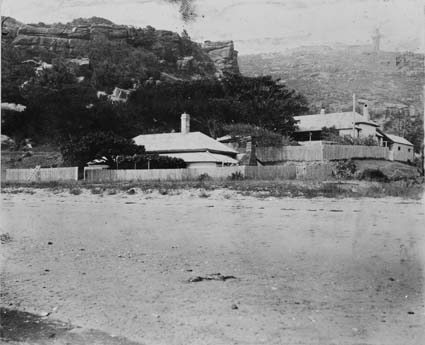 The Ross's house had a pretty rustic appearance with its neatly painted front, and leaf covered verandah, but, as he informed me, the beauty was all in appearance, since the house, a timber erection, had been built so many years ago, that slabs and posts and weatherboards were now so far decayed as to make it doubtful on the occasion of every gale of wind, whether it would stand it out, or succumb before the blast. However, by dint of constant painting and repairing, it is kept in an apparently comfortable state, despite the rottenness that lurks below the surface, and what is worse, the leakage from the roof above. In front of the house is a small, but well kept garden, on a terrace, built up on the side of the hill evidently after a considerable amount of labour, and overlooking from the farther side the men's hut and the beach beyond. From the side of the house, a wicket gate opens upon a broad pathway leading down to the beach, formed into broad low steps, by means of protecting logs, behind which gravel and stones have been laid just sufficiently off the level to secure drainage. The men's hut is a large slab house with a shingle roof admitting wind and rain everywhere, since the lower ends of the slabs have completely rotted away, and they rock away crazily in the wind in all the helplessness of extreme old age; whilst the boat's crew have their slumbers protected from the pelting rain that would otherwise penetrate the leaky rotten roof, only by the large tarpaulin, or sail, or whatever it is, that is thrown over it. A large boathouse, under which was stored the new and crack boat of the station, stands to the right of the men's hut, with a workshop, in which was a very good and complete supply of tools, attached to it; and at the back, under a shed or lean-to, a little punt, sufficient to accommodate three or four persons, was in course of construction, for use on fishing expeditions.
The Ross's house had a pretty rustic appearance with its neatly painted front, and leaf covered verandah, but, as he informed me, the beauty was all in appearance, since the house, a timber erection, had been built so many years ago, that slabs and posts and weatherboards were now so far decayed as to make it doubtful on the occasion of every gale of wind, whether it would stand it out, or succumb before the blast. However, by dint of constant painting and repairing, it is kept in an apparently comfortable state, despite the rottenness that lurks below the surface, and what is worse, the leakage from the roof above. In front of the house is a small, but well kept garden, on a terrace, built up on the side of the hill evidently after a considerable amount of labour, and overlooking from the farther side the men's hut and the beach beyond. From the side of the house, a wicket gate opens upon a broad pathway leading down to the beach, formed into broad low steps, by means of protecting logs, behind which gravel and stones have been laid just sufficiently off the level to secure drainage. The men's hut is a large slab house with a shingle roof admitting wind and rain everywhere, since the lower ends of the slabs have completely rotted away, and they rock away crazily in the wind in all the helplessness of extreme old age; whilst the boat's crew have their slumbers protected from the pelting rain that would otherwise penetrate the leaky rotten roof, only by the large tarpaulin, or sail, or whatever it is, that is thrown over it. A large boathouse, under which was stored the new and crack boat of the station, stands to the right of the men's hut, with a workshop, in which was a very good and complete supply of tools, attached to it; and at the back, under a shed or lean-to, a little punt, sufficient to accommodate three or four persons, was in course of construction, for use on fishing expeditions.
Running out from the beach immediately in front of these is a long and well constructed jetty, built on piles, and carried into good deep water at the lowest tides. At the back of the cottage we were shown, with evident pride, the arrangements that had been made for supplying the station with water. These were effected by bringing the water of a beautifully clear and crystal spring, by means of long troughs from a dank, rocky gully in the mountain's side, whence it took its source, down to the bask of the premises, and within easy reach of the domestics. This stream, which has never been known to fail, even in the dryest season, is said to be deliciously cold and refreshing…
The Commonwealth of Australia Act, 1901, transferred of the Customs Department to the Federal jurisdiction. The collections of customs and excise by the New South Wales Government ceased on 31 December 1900 and the Broken Bay Customs Station was closed.
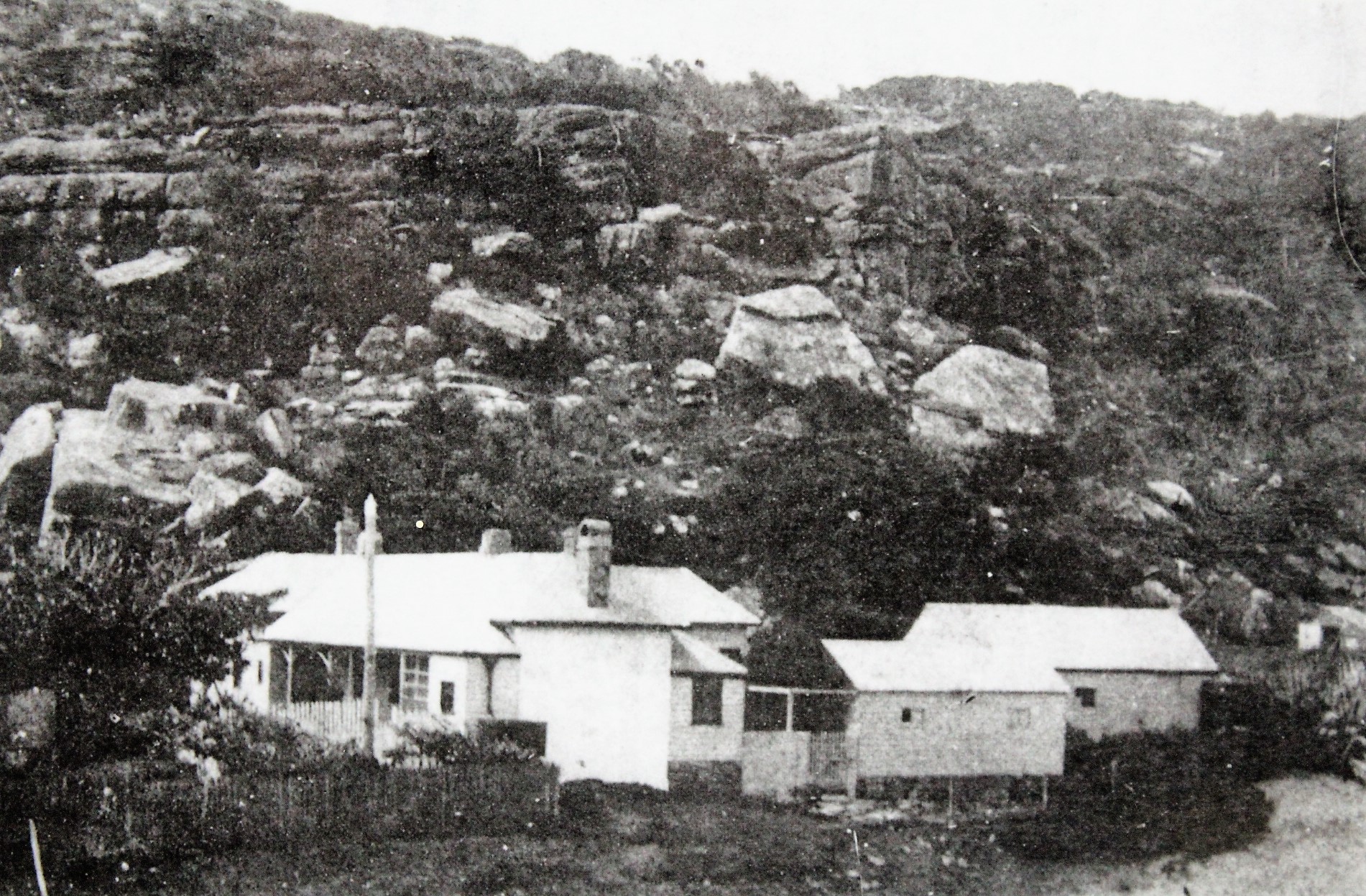
Barranjoey cottages, Date : 1906, Image no. : C4076, from National Archives of Australia
Weather records for December and January 1919, just after the Great War (WWI) show heavy rains in December and a steady 73 degrees Fahrenheit or a cooler January then expected and with SSE breezes and fine, clear and dry skies and seas. This may have been a relief as September 1919 brought one of the hottest Spring days on record up until then. Either way visitors would have had fishing, exploring the headland and swimming to keep them occupied. The cottage remained under the keeping of the Woodley family up until 1976 when it was burnt down.
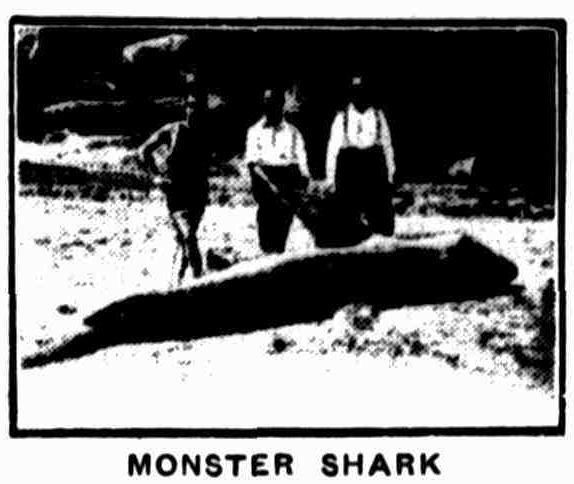
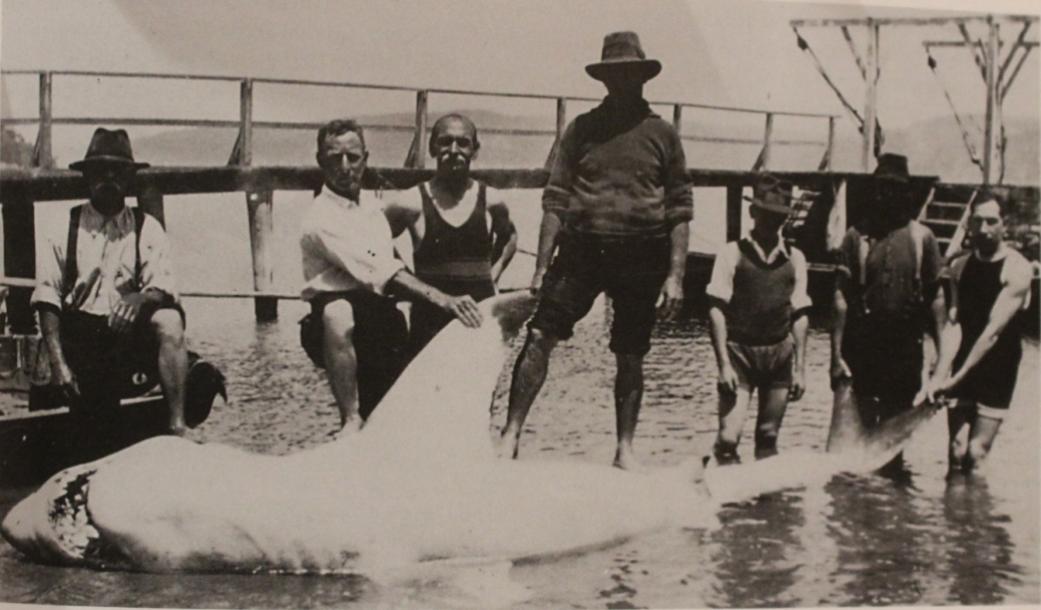
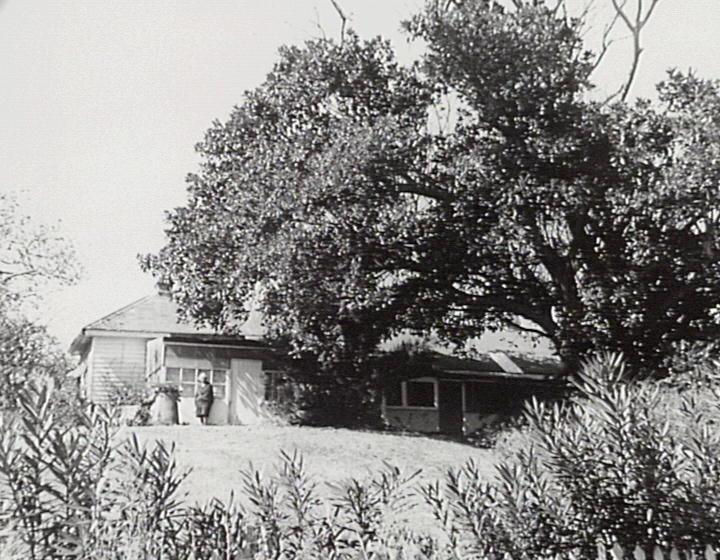

|
Woodleys Cottage Barrenjoey Customs Cottages.pdf Size : 180.13 Kb Type : pdf |
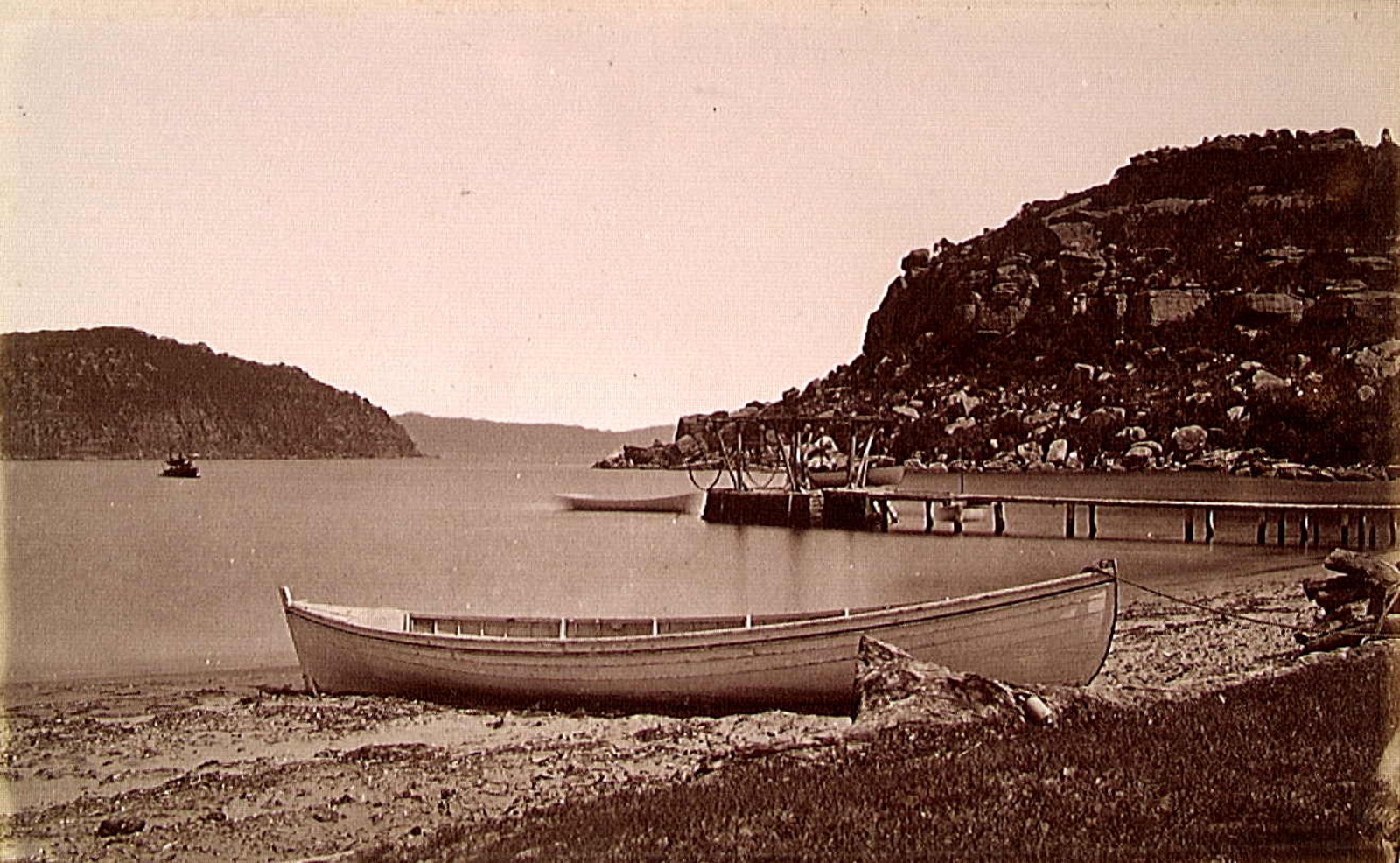
Broken Bay. Date(s) of creation:1889. by Charles Potter 1889. Image No:FL15796563. Courtesy State Library of Victoria
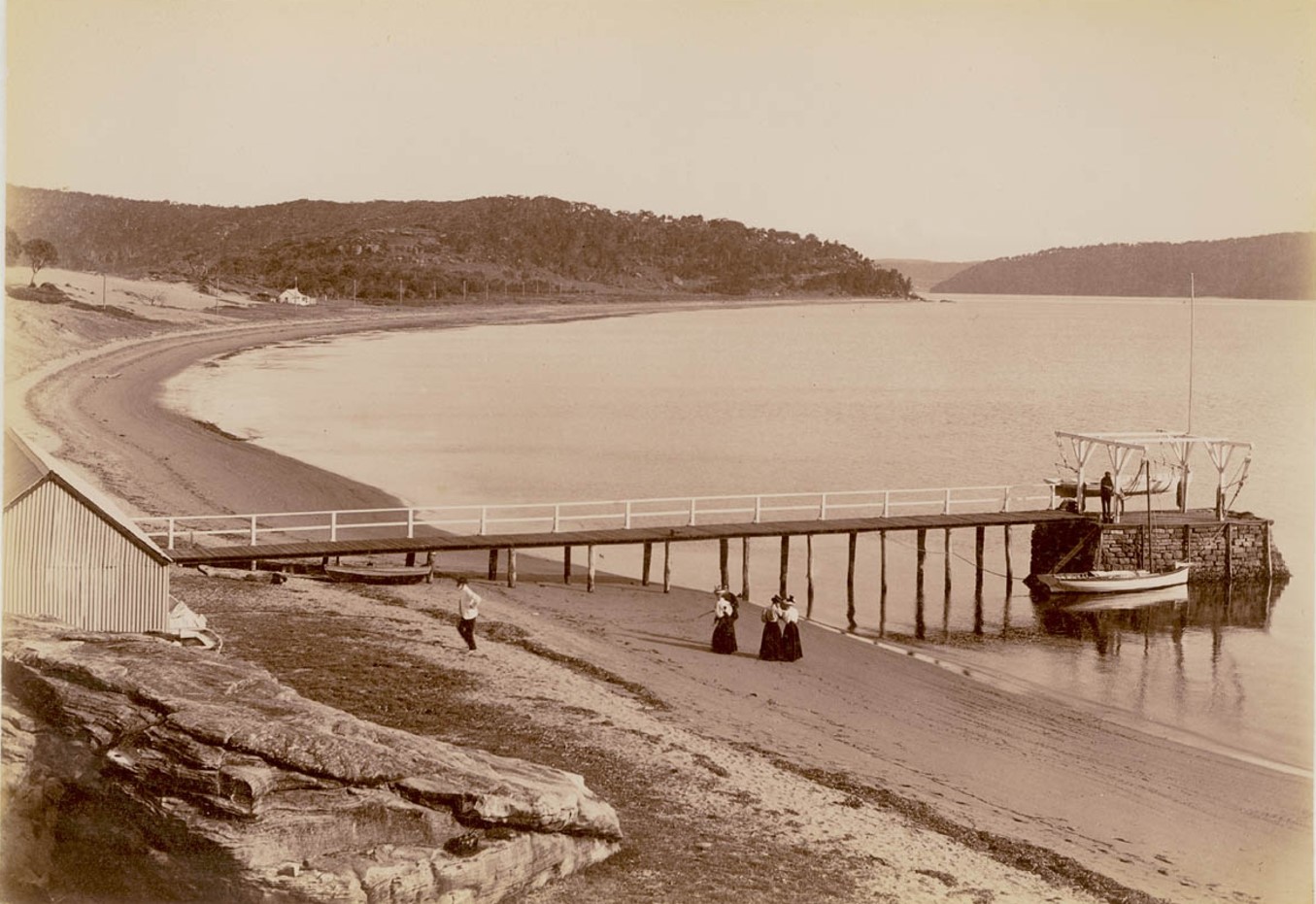
Above: Wharf, Barrenjoey, Hawkesbury River, 1900-1910. Pic No: a116421, Courtesy of The State Library of NSW

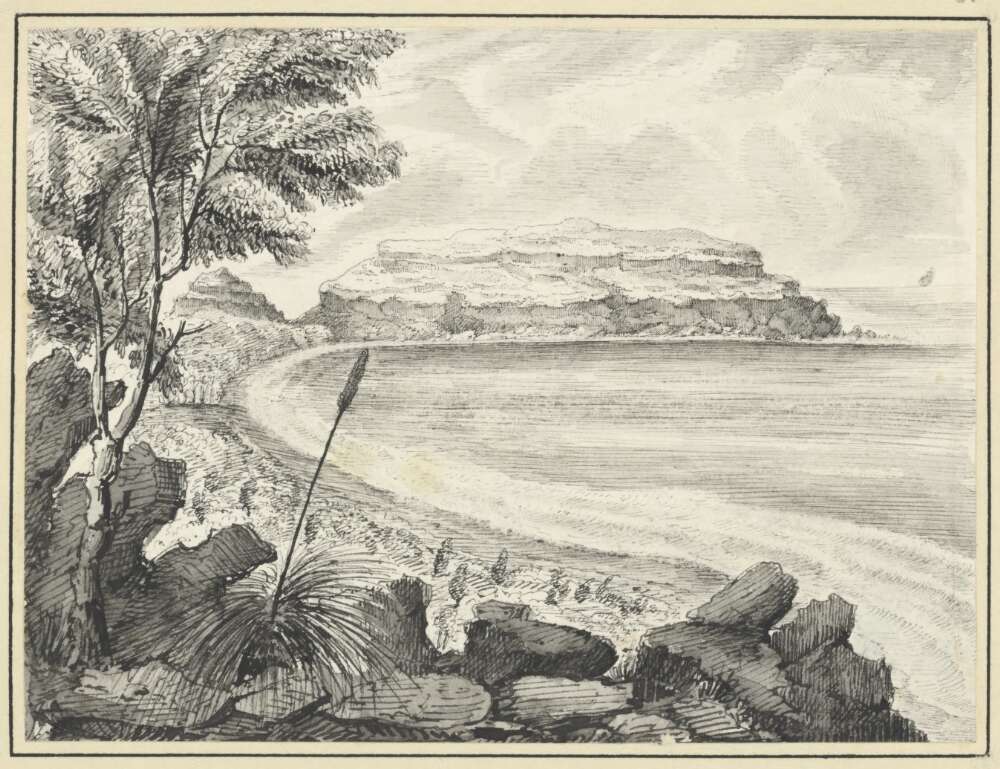
Above: Govett, William Romaine, 1807-1848,South headland of Broken Bay, New South Wales [picture],[1836?] 1 drawing : pen, ink and wash ; 10.7 x 14.3 cm.
Part of Original drawings 1836-7 [picture] 1836-1837, nla.pic-an3365031, courtesy the National Library of Australia
Below: Barrenjuey [i.e. Barrenjoey], Broken Bay [picture] 1869 Jan. 16. Creator; Slade, George Penkivil, 1832-1896. No. 32 in his Sketches.; Part of: Sketches and watercolours.; Title from inscription l.r.; (ANL)R7314. Subject Barranjoey (N.S.W.) -- Pictorial works. Picture -- New South Wales -- 1851-1900. nla.pic-an6454687 courtesy National Library of Australia
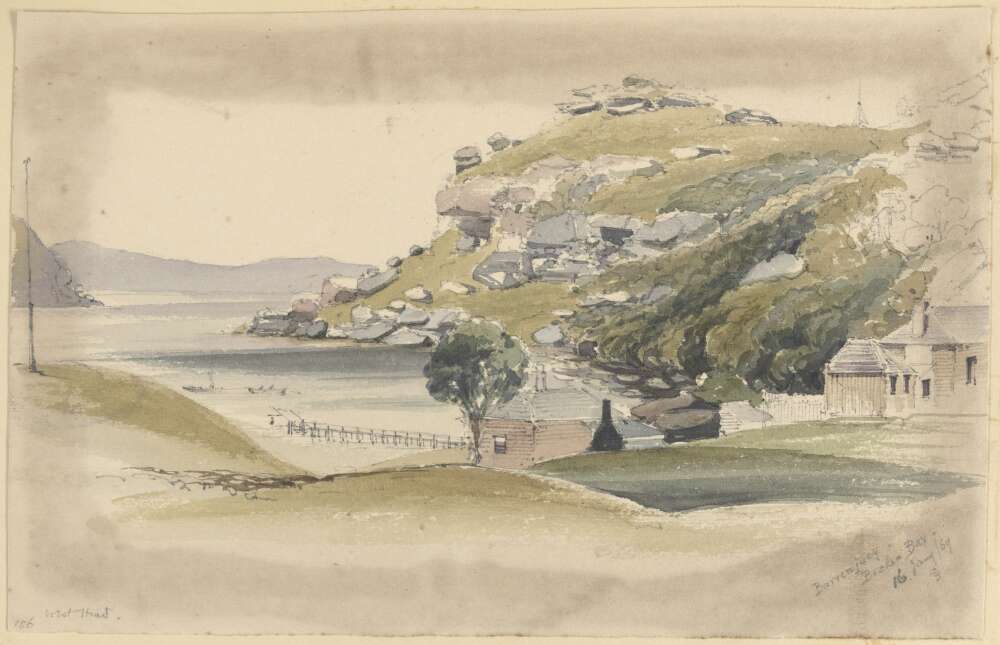
Below: Barranjoey Head, Broken Bay [picture]Creator Graham, H. J. (Harold John), 1858-1929. Description, pen and ink drawing [1884?] Image number nla.pic-an6438965, courtesy National Library of Australia.
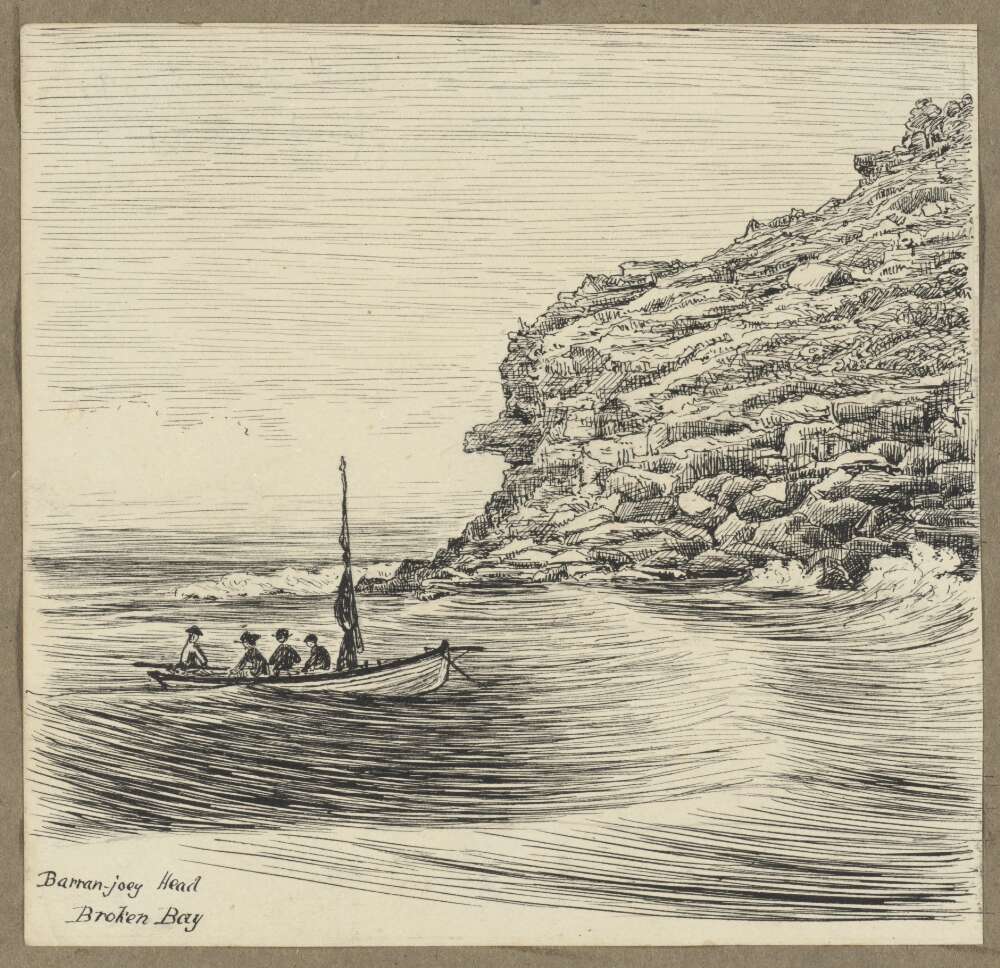
Woodley's Cottage at Barrenjoey, Station Beach, threads collected and collated by A J Guesdon, 2011.